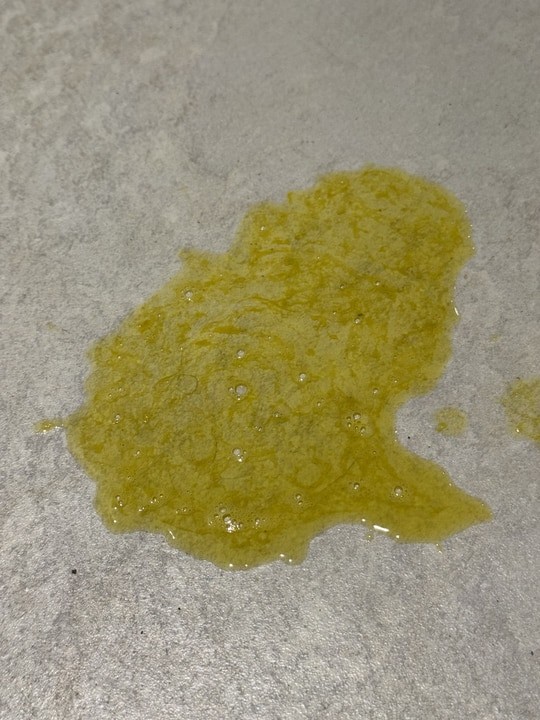If you’ve ever seen your dog throw up yellow foam or liquid, you know how alarming it can be. This yellow vomit is often bile, a digestive fluid produced in the liver and stored in the gallbladder. While occasional yellow vomit might not be cause for immediate concern, frequent or persistent episodes warrant a trip to the veterinarian. This article explores the common reasons why your dog might be vomiting yellow, potential treatments, and answers frequently asked questions.
 yellow bile in dogs; a pile of yellow vomit from a dog.
yellow bile in dogs; a pile of yellow vomit from a dog.
A photo of yellow bile vomited by a dog.
Common Causes of Yellow Vomit in Dogs
Several factors can contribute to a dog vomiting yellow bile. These range from relatively benign conditions to more serious illnesses.
1. Bilious Vomiting Syndrome (BVS)
BVS often occurs in the morning after a long period without food. The stomach empties, and bile refluxes into the stomach, causing irritation and vomiting. Symptoms include nausea, lip licking, and excessive swallowing. Feeding a small meal before bedtime can often resolve this issue.
2. Gastrointestinal Issues
Various gastrointestinal problems can lead to yellow vomit, including:
- Inflammatory Bowel Disease (IBD): Chronic inflammation of the digestive tract.
- Gastric Ulcers: Sores in the stomach lining.
- Infections: Bacterial, viral, or parasitic infections.
- Cancer: Certain types of gastrointestinal cancer.
These conditions require veterinary diagnosis and treatment. Breeds like Bulldogs, Toy breeds, Labrador Retrievers, and Poodles may be predisposed to certain stomach sensitivities.
3. Pancreatitis
Inflammation of the pancreas, often caused by a high-fat diet or unknown factors, can result in yellow vomit, abdominal pain, and diarrhea. This condition requires immediate veterinary attention.
4. Addison’s Disease
This endocrine disorder affects the adrenal glands, leading to insufficient production of stress hormones. Even minor stress can trigger vomiting in dogs with Addison’s disease.
5. Intestinal Blockages
Blockages in the intestines are a medical emergency. Initial vomiting may progress to yellow bile as the stomach empties. Other signs include lethargy and severe abdominal pain. Surgery is often necessary to remove the obstruction.
6. Food Allergies
Allergies to common ingredients like beef, dairy, wheat, chicken, and corn can cause vomiting. Identifying and eliminating the allergen from the dog’s diet is crucial. A veterinary nutritionist can help formulate a hypoallergenic diet.
What to Do if Your Dog Vomits Yellow
- Monitor: If your dog vomits yellow once and acts normal, monitor them closely.
- Veterinary Care: If vomiting persists for more than 24 hours, is accompanied by other symptoms, or happens frequently, consult a veterinarian immediately.
Dog Vomiting Yellow Bile: FAQs
Is yellow vomit in dogs always serious?
While a single episode may not be serious, recurring yellow vomit indicates an underlying problem that requires veterinary attention.
How can I soothe my dog’s upset stomach?
Fasting for 12-24 hours, offering ice chips, or feeding small amounts of bland food like plain cooked chicken and rice can help. Consult your vet before administering any home remedies.
Can my dog drink water after vomiting yellow bile?
Offer small amounts of water a few hours after vomiting. If vomiting doesn’t recur, resume normal water intake.
When should I take my dog to the vet for yellow vomit?
Consult a vet if vomiting occurs more than once in 24 hours, is accompanied by other symptoms, or is a chronic issue.
Why is my puppy vomiting yellow?
Puppies may vomit yellow due to an empty stomach, but it can also indicate serious conditions like parvovirus or intestinal blockages. Consult a vet if concerned. Feeding a small meal before bedtime may help with empty stomach vomiting.
